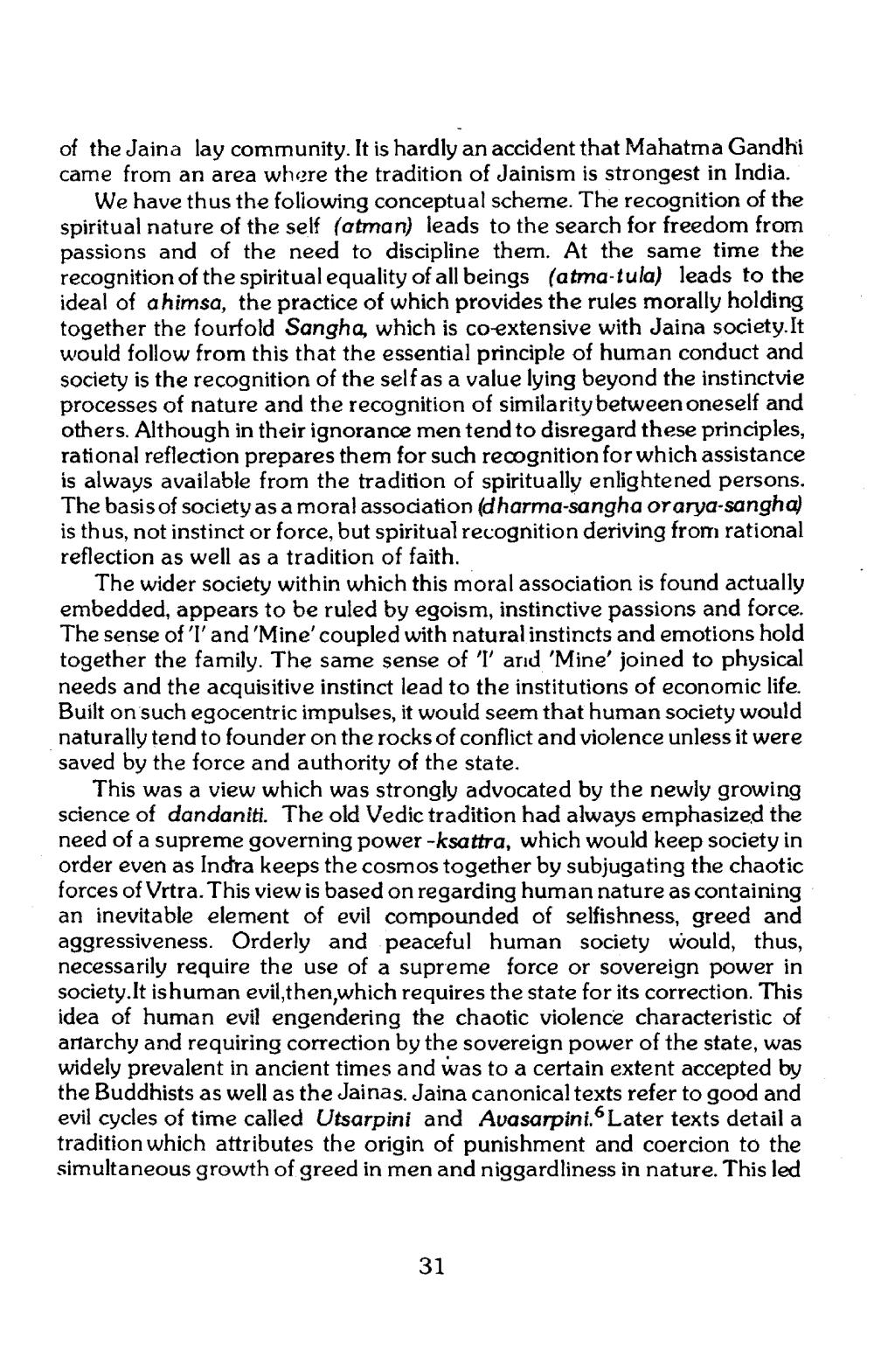________________
of the Jaina lay community. It is hardly an accident that Mahatma Gandhi came from an area where the tradition of Jainism is strongest in India.
We have thus the following conceptual scheme. The recognition of the spiritual nature of the self (atman) leads to the search for freedom from passions and of the need to discipline them. At the same time the recognition of the spiritual equality of all beings (atma-tula) leads to the ideal of ahimsa, the practice of which provides the rules morally holding together the fourfold Sangha, which is co-extensive with Jaina society. It would follow from this that the essential principle of human conduct and society is the recognition of the self as a value lying beyond the instinctvie processes of nature and the recognition of similarity between oneself and others. Although in their ignorance men tend to disregard these principles, rational reflection prepares them for such recognition for which assistance is always available from the tradition of spiritually enlightened persons. The basis of society as a moral association (dharma-sangha or arya-sangha) is thus, not instinct or force, but spiritual recognition deriving from rational reflection as well as a tradition of faith.
The wider society within which this moral association is found actually embedded, appears to be ruled by egoism, instinctive passions and force. The sense of 'I' and 'Mine' coupled with natural instincts and emotions hold together the family. The same sense of 'I' and 'Mine' joined to physical needs and the acquisitive instinct lead to the institutions of economic life. Built on such egocentric impulses, it would seem that human society would naturally tend to founder on the rocks of conflict and violence unless it were saved by the force and authority of the state.
This was a view which was strongly advocated by the newly growing science of dandaniti. The old Vedic tradition had always emphasized the need of a supreme governing power -ksattra, which would keep society in order even as Indra keeps the cosmos together by subjugating the chaotic forces of Vrtra. This view is based on regarding human nature as containing an inevitable element of evil compounded of selfishness, greed and aggressiveness. Orderly and peaceful human society would, thus, necessarily require the use of a supreme force or sovereign power in society.It is human evil,then,which requires the state for its correction. This idea of human evil engendering the chaotic violence characteristic of anarchy and requiring correction by the sovereign power of the state, was widely prevalent in ancient times and was to a certain extent accepted by the Buddhists as well as the Jainas. Jaina canonical texts refer to good and evil cycles of time called Utsarpini and Avasarpini. Later texts detail a tradition which attributes the origin of punishment and coercion to the simultaneous growth of greed in men and niggardliness in nature. This led
31




